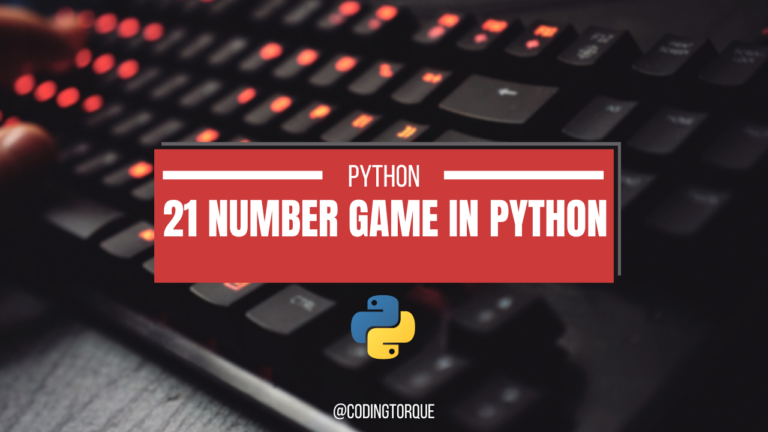Let’s create a step-by-step guide for building the classic 2048 game in Python. 2048 is a popular puzzle game where you slide numbered tiles on a grid to combine them and create a tile with the number 2048. We’ll implement a simplified version of this game without a graphical user interface (GUI). You can later enhance it by adding a GUI using libraries like Tkinter or Pygame.
1. Game Rules:
- The game is played on a 4×4 grid.
- Initially, two random cells are filled with the number 2.
- You can move the tiles in four directions: up, down, left, or right.
- When you move the tiles, identical numbers merge into one, and the extreme cell in that direction gets filled with the sum.
- After each move, a new random empty cell is filled with the number 2.
- The goal is to create a tile with the number 2048.
2. Logic Overview:
- We’ll represent the game board as a 4×4 matrix (a list with four rows and four columns).
- We’ll design functions for each logic (e.g., left swipe, right swipe, up swipe, down swipe).
- The game will continue until there are no empty cells left or the player reaches 2048.
3. Implementation Steps:
a. Initialize the Game Board:
Python
def start_game():
mat = [[0] * 4 for _ in range(4)]
return mat
AI-generated code. Review and use carefully. More info on FAQ.
b. Add a Random 2 or 4 to an Empty Cell:
Python
def add_new(mat):
empty_cells = [(i, j) for i in range(4) for j in range(4) if mat[i][j] == 0]
if empty_cells:
i, j = random.choice(empty_cells)
mat[i][j] = random.choice([2, 4])
AI-generated code. Review and use carefully. More info on FAQ.
c. Swipe Left:
Python
def swipe_left(mat):
for row in mat:
temp = [x for x in row if x != 0]
temp += [0] * (4 - len(temp))
for i in range(3):
if temp[i] == temp[i + 1]:
temp[i] *= 2
temp[i + 1] = 0
temp = [x for x in temp if x != 0]
temp += [0] * (4 - len(temp))
row[:] = temp
AI-generated code. Review and use carefully. More info on FAQ.
d. Swipe Right:
Python
def swipe_right(mat):
for row in mat:
temp = [x for x in row if x != 0]
temp = [0] * (4 - len(temp)) + temp
for i in range(3, 0, -1):
if temp[i] == temp[i - 1]:
temp[i] *= 2
temp[i - 1] = 0
temp = [x for x in temp if x != 0]
temp = [0] * (4 - len(temp)) + temp
row[:] = temp
AI-generated code. Review and use carefully. More info on FAQ.
e. Swipe Up:
Python
def swipe_up(mat):
for j in range(4):
temp = [mat[i][j] for i in range(4) if mat[i][j] != 0]
temp += [0] * (4 - len(temp))
for i in range(3):
if temp[i] == temp[i + 1]:
temp[i] *= 2
temp[i + 1] = 0
temp = [x for x in temp if x != 0]
temp += [0] * (4 - len(temp))
for i in range(4):
mat[i][j] = temp[i]
AI-generated code. Review and use carefully. More info on FAQ.
f. Swipe Down:
Python
def swipe_down(mat):
for j in range(4):
temp = [mat[i][j] for i in range(4) if mat[i][j] != 0]
temp = [0] * (4 - len(temp)) + temp
for i in range(3, 0, -1):
if temp[i] == temp[i - 1]:
temp[i] *= 2
temp[i - 1] = 0
temp = [x for x in temp if x != 0]
temp = [0] * (4 - len(temp)) + temp
for i in range(4):
mat[i][j] = temp[i]
AI-generated code. Review and use carefully. More info on FAQ.
4. Play the Game:
- Combine the logic functions to create the game loop.
- Display the



